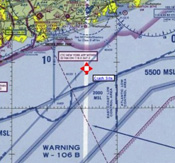NTSB Crash Investigation
0) : ?>NTSB Aviation Accident Reports
The National Transportation Safety Board is an independent Federal agency charged by Congress with investigating every civil aviation accident in the United States and significant accidents in the other modes of transportation — railroad, highway, marine and pipeline. The National Transportation Safety Board also issues safety recommendations aimed at preventing future accidents.
The Safety Board determines the probable cause of:
- all U.S. civil aviation accidents and certain public-use aircraft accidents
- selected highway accidents
- railroad accidents involving passenger trains or any train accident that results in at least one fatality or major property damage
- major marine accidents and any marine accident involving a public and a nonpublic vessel
- pipeline accidents involving a fatality or substantial property damage
- releases of hazardous materials in all forms of transportation
- selected transportation accidents that involve problems of a recurring nature

The NTSB investigates every civil aviation accident in the United States.
The rules of the Board are located in Chapter VIII, Title 49 of the Code of Federal Regulations. The NTSB investigates and reports on all U.S. air carrier accidents, commuter and air taxi crashes, mid-air collisions, serious mishaps involving public use (government) aircraft and all fatal general aviation accidents. The NTSB also investigates accidents involving both civilian and military aircraft, and crashes involving military aircraft where the functions of the FAA are at issue. Internationally, the NTSB investigates major accidents involving U.S. air carriers and U.S. manufactured airliners under the auspices of the International Civil Aviation Organization (ICAO).
The NTSB aviation accident database contains information from 1962 and later about civil aviation accidents and selected incidents within the United States, its territories and possessions, and in international waters. Generally, a preliminary report is available online within a few days of an accident. Factual information is added when available, and when the investigation is completed, the preliminary report is replaced with a final description of the accident and its probable cause.
The National Transportation Safety Board
The National Transportation Safety Board (hereinafter, NTSB) is required by law to investigate all civil aircraft accidents in the United States and to determine and to publicly report the facts, conditions, circumstances and probable cause of such aircraft accidents. 49 U.S.C. App. §§ 1902, 1903(a)(1) and (a)(2). NTSB reports of accidents in brief or summary format are issued for all aviation accidents and for all non-major railroad, highway, pipeline and marine accidents investigated by or for the NTSB, for which probable cause is determined. The final reports are generally issued about a year after the accident in a initial “brief of accident” NTSB investigation report.
The Probable Cause determination of the NTSB is not based on “evidence.” The determination of proximate cause in a civil liability trial must be based on competent evidence. The NTSB may consider matters in reaching the probable cause determination, which could be excluded from evidence in civil litigation, because hundreds of years of jurisprudence has taught us that certain information is unreliable. Field investigations result in a factual report, from which the investigator recommends a probable cause determination to the Board. The Board then reviews field investigation reports and votes to adopt, reject or modify the probable cause determination recommended by a Field Investigator. When the NTSB approves a Field Investigator’s Factual Report, their probable cause determination along with a summary of the relevant facts is published on a quarterly basis. You can find all such accidents by date and location in “Briefs of Accident” in the public dockets section of NTSB Headquarters in Washington, D.C.
Major accident investigations led by NTSB “Go Teams” are more heavily documented. Each group chairman prepares a report and submits it to the Investigator In Charge. The Investigator In Charge in turn, prepares a draft NTSB Report and submits it to the Board for review. The Board in major airline disaster cases, and other accidents of great public interest, may conduct public hearings wherein witnesses are called and interrogated.
The Board will then meet and deliberate to determine probable cause. After the NTSB reviews the results of a major accident investigation by a “Go Team,” and determines Probable Cause, the results are published in what has been traditionally called The NTSB “Blue Cover” Report. (It is now actually white with blue printing.) The NTSB Factual report and the NTSB Blue Cover Report of the Board are both placed in the public docket at the NTSB Headquarters in Washington, D.C. They are available to anyone who wants to obtain a copy. In addition, all of the exhibits and sub-group reports which were part of the investigations are included in the public docket.
NTSB Reports as Evidence
NTSB probable cause determinations are not admissible in evidence [49 USC 1441(e)]. Private litigants must prove the cause of the crash to a jury without the benefit of the conclusions of the NTSB accident investigations. Many courts have allowed the Field Investigator’s “Factual Report” into evidence and some courts have allowed the jury to read the NTSB “Blue Cover” Report. However, federal courts have begun to follow 49 USC 1441(e) “literally.” and have simply refused to allow the NTSB Blue Cover Report into evidence in airline disaster litigation (Sioux City United Airlines DC-10 Disaster.) There is support for this caution because the Blue Cover Report of the Board often has factual findings intertwined with opinion and analysis such that it would be very difficult for a Judge to extract purely factual information that will have meaning for the jury.
Contact a Helicopter Crash Attorney
If you have been injured or a loved one has been killed in a helicopter crash, then call us 24/7 for an immediate consultation to discuss the details of the accident and learn what we can do to help protect your legal rights. Whether the accident was caused by negligence on the part of the helicopter owner, hospital or corporation, the manufacturer or due to lack of training, poor maintenance, pilot or operator error, tail rotor failure, sudden loss of power, defective electronics or engine failure or flying in bad weather conditions, we can investigate the case and provide you the answers you need. Call Toll Free 1-800-883-9858 and talk to a Board Certified Trial Lawyer with over 30 years of legal experience or fill out our online form by clicking below:
0) : ?>
